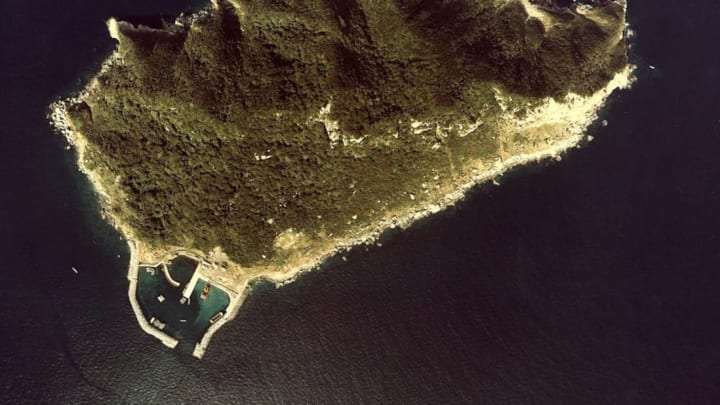Visit Okinoshima—a speck of land off the coast of Kyushu, Japan's third largest island—and you’ll see no female faces. Only men are allowed to visit the island, which is home to a sacred religious shrine honoring a goddess of the sea. As BBC News reports, this men-only island is now up for UNESCO World Heritage status, along with four other culturally significant sites in Japan.
Long ago, between the 4th and 9th centuries, sailors conducted rites at the shrine to ensure that their ships remained safe at sea. The island was also the site of numerous cultural exchanges between the Japanese and people of the Korean Peninsula. Artifacts unearthed on the island have included glass cup fragments believed to be from Persia, gold rings from the Korean Peninsula, and other treasures, according to The Telegraph.
Nobody quite knows why women aren’t allowed on Okinoshima, but we do know that the rule dates back to ancient times. Multiple theories exist, including that it was too dangerous for childbearing women to travel from the mainland, or that female pilgrims were considered "impure" because they menstruated.
Male visitors have their own set of guidelines to follow: Once they've arrived on Okinoshima, they're required to take off their clothing and perform a cleansing ritual. They're also not allowed to take any items home—big or small—from the island, or talk about their trip once they've returned home.
This codified set of instructions isn’t exactly conducive to tourism, which will surely grow if Okinoshima ends up being registered on the World Heritage list. Religious officials say they’ll deal with any issues as they arise, but that they’re not making any exceptions for women visitors. (That said, we know of a UNESCO-recognized matriarchal island off the coast of Estonia that will welcome them with open arms.)
[h/t BBC News]
